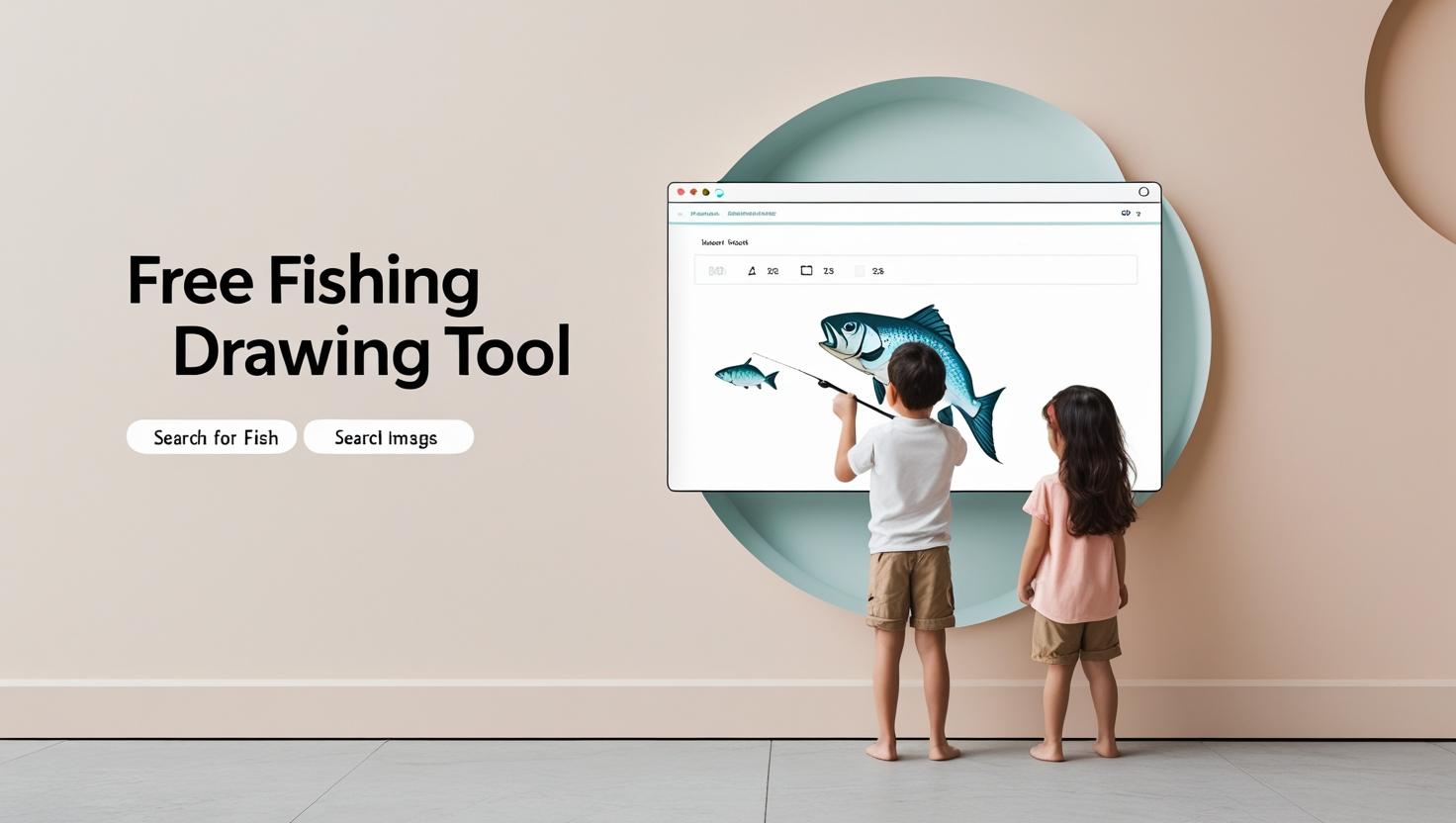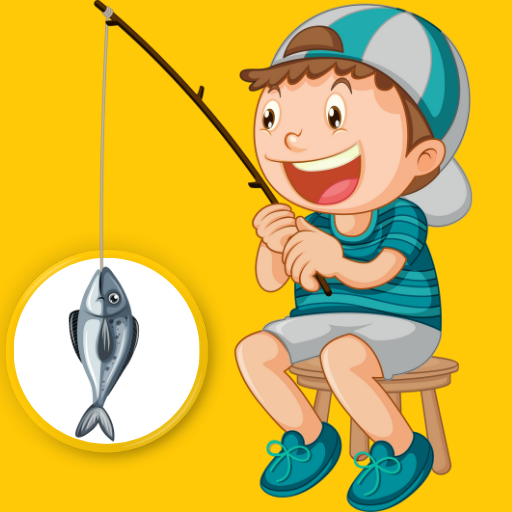Free Fishing Drawing Tool 2025
·

${query}
Google image result
Failed to load results.
'; } }What is a Fishing Drawing Tool?
A fishing drawing tool refers to any software, app, or physical implement used to create illustrations related to fishing. This can range from digital drawing platforms with brushes tailored for scales and water textures to physical pencils, pens, and markers designed for fine detail and outdoor use.
These tools are used by:
- Professional artists
- Graphic designers
- Game developers
- Educational illustrators
- Angling enthusiasts
Whether it’s a detailed rendering of a bass leaping from the water or a stylized cartoon of a fly-fishing scene, the fishing drawing tool is the foundation of any visual storytelling in this genre.
Top Digital Fishing Drawing Tools for Professionals
1. Adobe Illustrator – Vector Precision for Angling Illustrations
Adobe Illustrator remains a powerhouse for detailed, scalable illustrations. With precise control over curves and lines, it’s perfect for drawing the anatomy of fish, fishing gear, and detailed scenes.
Key Features:
- Pen tool for clean, accurate lines
- Layer system for complex compositions
- Custom brushes for water ripple effects
- Integration with Adobe Stock for fishing reference images
2. Procreate – Best for iPad Fishing Art
For mobile artists, Procreate offers intuitive controls and powerful tools, making it ideal for sketching fishing scenes anywhere, even on the water.
Key Features:
- Pressure-sensitive brushes for scale detailing
- Realistic textures for water, reeds, and sky
- Time-lapse replay for social media content
- Importable brush packs tailored for nature scenes
3. Clip Studio Paint – Ideal for Detailed Fish Anatomy
Clip Studio Paint is favored by illustrators needing hyper-realistic fish renderings. It provides a natural drawing experience with enhanced control.
Key Features:
- Advanced pen pressure recognition
- 3D pose references for anglers
- Specialized fish and marine texture packs
- Responsive vector layers for clean, scalable art

Best Traditional Fishing Drawing Tools for Outdoor Sketching
1. Prismacolor Premier Colored Pencils
When drawing fish in the wild or illustrating a fishing journal, these high-quality colored pencils deliver vibrant, blendable color that mimics real fish hues.
Advantages:
- Rich pigment for lifelike fish colorations
- Smooth blending ideal for shading scales
- Durable core perfect for field sketching
2. Sakura Pigma Micron Pens
For linework and fine detailing of fishing gear or fish features, these pens are unbeatable.
Advantages:
- Waterproof and fade-resistant ink
- Ideal for detailed line art
- Multiple tip sizes for varying line weight
3. Moleskine Watercolor Sketchbook
Perfect for watercolor renderings of your fishing scenes, this sketchbook handles wet media without warping.
Advantages:
- Heavyweight paper for ink and paint
- Portable for outdoor use
- Excellent surface for blending aquatic tones
Must-Have Features in a Quality Fishing Drawing Tool
Choosing the best fishing drawing tool depends on your goals, medium, and level of detail required. Regardless of your format, look for the following features:
- Pressure Sensitivity: Whether using a stylus or pencil, variable line weight is essential for drawing scales, fins, and movement in water.
- Brush Customization: Digital tools should offer brushes that mimic water, fur, or scales.
- Color Accuracy: Precise hues for fish species, water, and natural surroundings make illustrations come to life.
- Portability: Especially for outdoor sketchers, lightweight and easy-to-carry tools are essential.
- Durability: Outdoor sketching requires tools that can withstand wind, moisture, and rough terrain.
Step-by-Step: How to Use a Fishing Drawing Tool Effectively
Step 1: Choose Your Subject
Decide whether you’re drawing a specific species (e.g., largemouth bass, trout) or a full scene (angler, lake, boat). Gather reference photos or observe directly.
Step 2: Start with Basic Shapes
Use light lines or a basic sketch brush to map the body, fins, and tail. Keep proportions in mind.
Step 3: Add Details and Texture
Gradually refine your lines, adding scales, fin striations, and water surface details. Use crosshatching or stippling for texture.
Step 4: Apply Shading and Color
Whether digital or traditional, blend colors to highlight the iridescence and gloss typical of fish skin. Pay attention to how light reflects on water and moist surfaces.
Step 5: Final Touches
Enhance contrast, clean up outlines, and add background elements like reeds, bait, or an angler silhouette.
Why Artists and Anglers Love Fishing Drawing Tools
Fishing drawing tools offer more than just a way to create art—they provide a medium for storytelling, education, and recreation. Many illustrators use them to:
- Teach fish identification to students
- Create engaging fishing blogs or guides
- Design apparel, stickers, or branding for fishing gear
- Record and document fishing adventures
Some even combine drawing with augmented reality to create interactive fishing guides.
Fishing Drawing Tool Apps Worth Exploring
Aside from heavy-duty software, there are several niche fishing drawing apps tailored for enthusiasts and educators:
- FishSketch – A user-friendly app for kids and beginners to draw fish and share their art.
- AnglerArt AR – Uses AR to overlay your drawings on real fish or water scenes.
- Catch & Sketch – Lets you take a photo of your catch and trace or paint over it digitally.
These tools are perfect for anglers who want to preserve memories creatively.
Common Mistakes to Avoid When Using Fishing Drawing Tools
- Ignoring Fish Anatomy: Always use reference images to avoid unrealistic proportions.
- Overblending Colors: Especially in digital art, too much blending can reduce texture.
- Flat Backgrounds: Include environment elements like water reflections, vegetation, or bait for depth.
- Inconsistent Light Source: Maintain consistent shadows and highlights to create a believable scene.

Leave a Reply